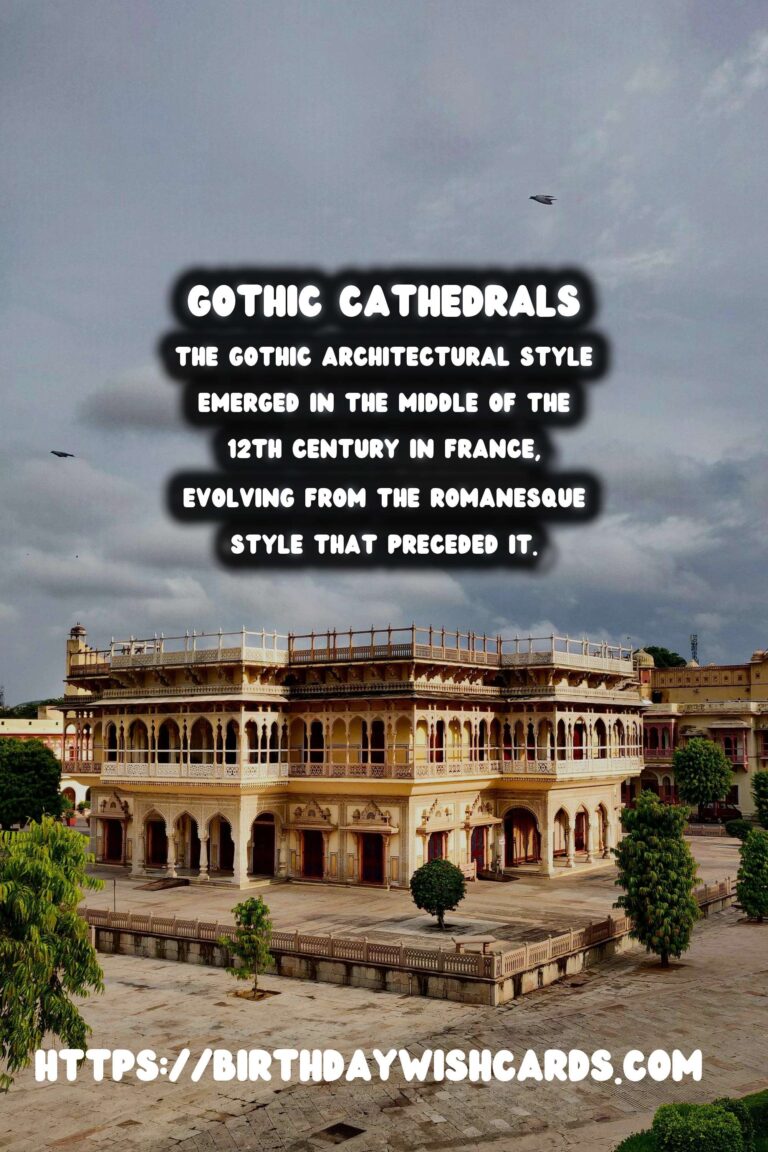
Embarking on a journey through the towering spires and intricate stonework of Gothic cathedrals is to step into a world defined by both artistic genius and deep religious devotion. These monumental structures stand as a testament to the medieval faith that inspired them, serving not only as places of worship but as embodiments of the era’s social and technological advancements.
The Rise of Gothic Architecture
The Gothic architectural style emerged in the middle of the 12th century in France, evolving from the Romanesque style that preceded it. Characterized by its pointed arches, ribbed vaults, and flying buttresses, Gothic architecture represented a leap forward in building techniques and aesthetics. The desire for verticality and light in church buildings was driven by a theological yearning to physically and spiritually reach toward the heavens.
Symbolism and Purpose
Gothic cathedrals were designed not just as places of worship but as representations of the divine order. The detailed sculptures and stained glass windows were a manifestation of biblical stories, a medieval Google designed to educate the illiterate masses about the scriptures. These buildings were instructional tools, often reflecting the power and influence of both the Church and the city they dominated.
Significant Gothic Cathedrals
Several Gothic cathedrals stand out for their beauty and historical importance. Notre-Dame de Paris, with its iconic flying buttresses and rose windows, remains a masterpiece despite the devastating fire of 2019. In England, the Canterbury Cathedral, a UNESCO World Heritage Site, is both a religious and historical icon.
Architectural Marvels and Techniques
The genius of Gothic architecture lies in its ability to create light-filled, expansive spaces by using innovative engineering techniques. The introduction of flying buttresses allowed builders to create taller structures with thinner walls that accommodated large stained glass windows. These windows were often intricately detailed, allowing colored light to flood the interior, creating a heavenly atmosphere inside the cathedral.
The Cultural Impact of Gothic Cathedrals
These cathedrals were not only religious symbols but also significant cultural hubs. They were the epicenters of medieval European cities, serving as venues for important religious and social events. The cathedral structured life around it, contributing significantly to the city’s identity and economy, often stimulating local artisans, and acting as a point of pride for the citizens.
Preservation Efforts
Many of these towering edifices have faced the ravages of time, war, and natural disasters. Restoration and preservation efforts have been crucial in maintaining their structural integrity and historical value. Modern technology, including laser scanning and 3D modeling, is now being used to aid in these preservation efforts, ensuring that future generations continue to experience the awe-inspiring beauty and significance of Gothic cathedrals.
Conclusion
The journey through the history of Gothic cathedrals is one that travels through the annals of art, faith, and human ingenuity. As one gazes up at the towering spires or steps inside the hushed, light-dappled interiors, there’s an overwhelming sense of the sacred and the sublime. These majestic structures remain a captivating window into the past, illustrating the medieval pursuit of proximity to the divine.
Embarking on a journey through the towering spires and intricate stonework of Gothic cathedrals is to step into a world defined by both artistic genius and deep religious devotion. The Gothic architectural style emerged in the middle of the 12th century in France, evolving from the Romanesque style that preceded it.
#GothicCathedrals #MedievalFaith

